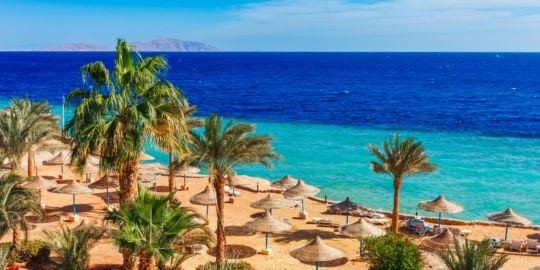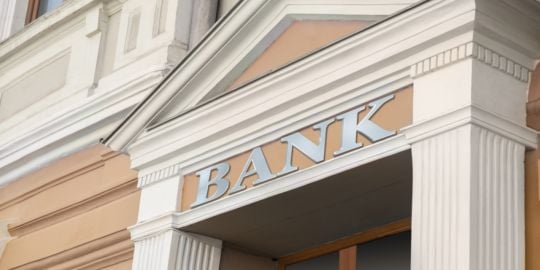The Cairo Opera House (Arabic: دار الأوبرا المصرية; Dār el-Opera el-Masreyya; literally "Egyptian Opera House"), part of Cairo's National Cultural Center, is the main performing arts venue in the Egyptian capital. Home to most of Egyptian's finest musical groups, it is located on the southern portion of Gezira Island in the Nile River, close to downtown Cairo
The opera house was inaugurated on October 10, 1988. The funds for the complex were a gift from the nation of Japan to Egypt as a result of President Hosni Mubarak's visit to Japan in April 1983... Construction began in May 1985 and lasted for three years.
In October 1988, President Mubarak and His Highness, Prince Tomohito of Mikasa, the younger brother of the Japanese Emperor, inaugurated the National Cultural Centre Cairo Opera House. It was the first time for Japan to stage a Kabuki show, a traditional popular drama with singing and dancing, in Africa or the Arab World.
In recognition of the Cairo Opera House, the London Royal Philharmonic Orchestra chose it as a venue for their first performance in the Middle East and Africa in January 2007.[1]
http://www.cairoopera.org/
Useful Information
The Cairo Metro (Arabic: مترو أنفاق القاهرة) in Egypt is the only full-fledged metro system in Africa. The system consists of two operational lines, with construction having begun on a third line in 2006.
The metro is run by the National Authority for Tunnels. The line uses standard gauge (1435 mm). Ticket price is EGP 1.00 for each journey (about GBP 0.12, EUR 0.14, or USD 0.18, average exchange rate for May 2010), regardless of distance. On all Cairo metro trains, the middle two cars (4th and 5th) of each train are reserved for women (the 5th car becomes a mixed use after 21:00). These cars are used as an option for women who do not wish to ride with men in the same car; however, women can still ride other cars freely.
The two lines carry around 700 million passengers a year and on average 2 million per day
New Cairo is a new satellite city of Cairo[1] in the newly formed Helwan Governorate of Egypt located in what was formerly desert. The master plan was created in 2001 by a Boston firm. It is the home of the new campus of the American University in Cairo, as well as the German University in Cairo, the Future University in Egypt (FUE), and the Canadian International College (CIC). New Cairo has been a means of escape for many from Egypt's upper-middle and upper classes from the noise and pollution of Cairo. Many of the residences are luxury villas and condominiums located in housing developments and gated communities.
This is an incomplete list of schools in Egypt
The International School of Egypt - New Cairo - http://www.isegypt.org
Knowledge Valley Schools - British International Education (Giza-El-Haram) http://www.kvs.edu.eg
The Oxford English Academy (Cairo-Maadi
New Generation Schools (Cairo-Ismailia road)
Menese International Schools (Cairo-Ismailia road)
Manarat Al-Mostaqbal Language School and American School (opposite to Carrefour, Maadi, Cairo)
Green Valley School (Obour City)
ABS Language School
Abbas El-Akkad Experimental Language School
Alexandria American College
The American International School in Egypt
Amgad International Language School
As-Salam College ex.English Mission in Egypt
cairo english school
Manar Language School International School In Ismailia
BBC International Schools
British Columbia Canadian International School (BCCIS)
British International School in Cairo
Obour City is a new suburb of Cairo. About 35 kilometers east-north of Cairo[1]. The suburb has approximately 250,000 resident[1]. It has also a number of hotels including Movenpick[2].
It is one of the new 16 towns in Greater Cairo. (among New Cairo, 6th of October City and others)
It is also considered an industrial area; it has a great number of factories, such as Technosat.
6th of October City is a satellite city of Cairo.[1] It is the capital of the 6th of October Governorate in Egypt. Population: About 500,000 [2] A new cosmopolitan city, it hosts students of many nationalities who seek education at its private universities.
It is also considered[who?] one of the first generation of new cities in Egypt.
Sharm el-Sheikh (Arabic: شرم الشيخ, Sharm al-Shaykh, pronounced [ˈʃɑɾm eʃˈʃeːx]) is a city situated on the southern tip of the Sinai Peninsula, in South Sinai Governorate, Egypt, on the coastal strip along the Red Sea with a population of approximately 35,000 (2008). Sharm el-Sheikh is the administrative hub of Egypt's South Sinai Governorate which includes the smaller coastal towns of Dahab and Nuweiba as well as the mountainous interior, Saint Catherine's Monastery and Mount Sinai.
Sharm el-Sheikh is sometimes called the "City of Peace", referring to the large number of international peace conferences that have been held there. It was known as Sharm-üş Şeyh (Sharm ush-Sheikh, "bay of the Sheikh" in Arabic) during Ottoman rule and was known as Ofira during Israeli occupation between 1967 and 1982. Among Egyptians, the name of the city is commonly shortened to "Sharm" ([ʃɑɾm]).
Hurghada (ar.: Al Ghardaqah, الغردقة, Egyptian Arabic: [el ɣæɾˈdæʔæ]) is a city in the Red Sea Governorate of Egypt. It is a main tourist center and second largest city (after Suez) in Egypt located on the Red Sea coast.
The city was founded in the early 20th century, and since the 1980s has been continually enlarged by Egyptian and foreign investors to become the leading seashore resort on the Red Sea. Holiday villages and hotels provide aquatic sport facilities for sailboarders, yachtsmen, scuba divers and snorkelers.
The Giza Necropolis stands on the Giza Plateau, on the outskirts of Cairo. This complex of ancient monuments includes the three pyramid complexes known as the Great Pyramids, the massive sculpture known as the Great Sphinx, several cemeteries, a workers' village and an industrial complex. It is located some 9 km (5 mi) inland into the desert from the old town of Giza on the Nile, some 25 km (15 mi) southwest of Cairo city centre. The pyramids were popularised in Hellenistic times when the Great Pyramid was listed by Antipater of Sidon as one of the Seven Wonders of the World. Today it is the only one of the ancient Wonders still in existence.
The Great Sphinx of Giza (or, commonly, the Sphinx) is a statue of a reclining or couchant sphinx (a mythical creature with a lion's body and a human head) that stands on the Giza Plateau on the west bank of the Nile in Giza, Egypt. It is the largest monolith statue in the world, standing 73.5 metres (241 ft) long, 6 metres (20 ft) wide, and 20.22 m (66.34 ft) high.[1] It is the oldest known monumental sculpture, and is commonly believed to have been built by ancient Egyptians of the Old Kingdom in the reign of the pharaoh Khafra (c. 2558–2532 BC).[1][2]
Just a short note: I have edited the title of your post, because it seems to contain divers information about Egypt.
Thank you for your effort and contribution 









